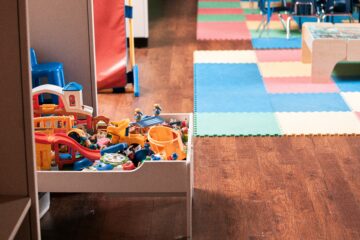Every child has their own individuality, and their learning style reflects that. Recognising and embracing your child’s unique learning style can greatly enhance their educational journey and empower them to unlock their maximum potential. This article explores various learning styles and provides practical tips for parents and teachers to effectively support each style.
What Are Learning Styles?
Different individuals have their own unique preferences when it comes to receiving, processing, and understanding information. There are various theories about learning styles, but one commonly used model classifies them into three main types: visual, auditory, and kinesthetic. Understanding your child’s preferred learning style can be beneficial in customising their educational experiences to suit their strengths.
Visual Learners
Individuals who learn visually tend to grasp information more effectively when it is conveyed through visual aids like diagrams, charts, pictures, and written text. They frequently possess a strong sense of purpose and may find pleasure in engaging in activities such as drawing, reading, and watching videos.
Traits of individuals who learn best through visual methods:
- Excellent ability to create compelling visual content
- Has a knack for recalling visual details
- Enjoys reading and writing
- Appreciation for visual arts
Ways to Help Visual Learners:
- Make studying more engaging by including visual aids like charts, graphs, and maps in your study sessions. Structured formats are particularly helpful for visual learners to comprehend information.
- Emphasise Key Information: Utilise a variety of vibrant highlighters to make important points in notes and textbooks stand out.
- Get your child excited about organising their thoughts and ideas with mind maps!
- Flashcards are a great tool to enhance your understanding of different concepts. By using images and keywords, you can make the learning process more engaging and effective.
- Spice up your explanations by incorporating visual storytelling techniques. This will make the information more captivating and enjoyable for your audience.
People who prefer to learn through listening
Those who prefer to learn through listening and speaking tend to excel as auditory learners. They have a knack for thriving in activities that revolve around conversation, music, and public speaking.
Traits of individuals who learn best through auditory means:
- Excellent communication skills
- Enjoys retaining spoken information Prefers engaging in lectures and actively participating in discussions
- Embrace the joy of music and engaging in rhythmic activities
How to Help Auditory Learners?
- Encourage your child to read their notes and textbooks out loud. Learning new information can improve memory retention.
- Join the conversation: Dive into lively discussions and debates on a wide range of topics to enhance your understanding.
- Enhance your study experience with a variety of audio resources such as audiobooks, podcasts, and recorded lectures.
- Get creative with mnemonics, rhymes, and songs to make remembering facts and concepts a breeze!
- Encourage your child to share what they’ve learned by asking them to give verbal summaries, whether it’s to you or to themselves.
Kinestheric Learners
Individuals who have a preference for kinaesthetic learning tend to grasp concepts more effectively when they engage in practical, hands-on experiences and participate in physical activities. They have a knack for tasks that require physical interaction and hands-on work.
Traits of individuals who learn best through physical movement:
- Excellent hand-eye coordination
- Enjoys engaging in interactive learning experiences
- Skilled at recalling actions and completing physical tasks
- Having a blast with sports, dance and building activities
Ways to Help Kinesthetic Learners:
- Engage in interactive experiences: Integrate experiments, building projects, and physical activities to enhance the learning process. For instance, incorporating manipulatives in math or science experiments can effectively demonstrate various concepts.
- Take regular breaks during study sessions to keep your focus sharp.
- Engage in interactive activities such as role-playing and simulations to effectively teach new concepts. Engaging in various scenarios can be a helpful approach for kinesthetic learners to grasp and retain information.
- Engage in interactive learning with a variety of tools, including educational apps, games, and interactive whiteboards.
- Create different study stations around the house with a variety of engaging activities that will keep you moving and entertained.
Discovering Your Child’s Unique Learning Style
Observing how your child naturally approaches learning tasks can help you identify their preferred learning style. Pay attention to the activities they enjoy and how they remember things most effectively. It’s also worth exploring their preferred learning styles and experimenting with various methods to find the one that clicks with them the most.
In addition, there are a variety of online assessments and quizzes that can assist in identifying your child’s preferred learning style. These assessments usually ask about your likes and tendencies in various learning situations.
Embracing a Variety of Learning Styles
Some kids don’t neatly fit into one category and may show traits of multiple learning styles. When faced with situations like this, it can be helpful to embrace a multi-sensory approach to learning. By incorporating a variety of sensory techniques, you can cultivate a dynamic and captivating atmosphere for learning.
Approaches for Engaging Multiple Senses:
- Blended Learning: Incorporate a variety of teaching methods to engage students with different learning preferences.
- Engaging Lessons: Create lessons that are interactive and involve various activities such as reading, listening, and hands-on tasks. When exploring history, you have the option to engage with different mediums. You can enjoy a documentary for a visual and auditory experience, tune into a historical podcast for an auditory journey, or get hands-on by creating a timeline or diorama.
- Exciting Projects: Get your child involved in group projects that involve a variety of skills. This not only promotes different learning styles but also fosters collaboration and effective communication.
- Exploring the Impact of Technology on Learning The ever-evolving world of technology provides a wide array of tools and resources that cater to diverse learning styles. There are a variety of educational tools available that can accommodate different learning styles, such as visual, auditory, and kinesthetic.
Exploring Technology to Cater to Diverse Learning Styles:
- Exciting visuals: digital whiteboards, interactive diagrams, and video tutorials.
- Engaging: Audiobooks, language learning apps with pronunciation guides, and educational podcasts.
- Engaging: Virtual labs, interactive simulations, and educational games that encourage hands-on learning.
Recognising and encouraging your child’s individual learning style is essential for their educational achievements and overall growth. By understanding your child’s unique learning style, you can customise educational activities to suit their preferences and maximise their potential. By tailoring learning strategies to suit their individual preferences, studying can become more effective and enjoyable.
Just keep in mind that our aim is to foster a nurturing and adaptable learning environment that caters to your child’s individual needs. Embrace the unique qualities of each individual and encourage them to explore various methods of learning. With the right support, your child can excel academically and cultivate a lifelong passion for learning.
If you enjoyed reading this article, make sure to explore our other content on educational strategies, ways to improve learning experiences, and resources to help your child succeed academically. Our website aims to offer helpful insights and practical advice for parents and educators.


